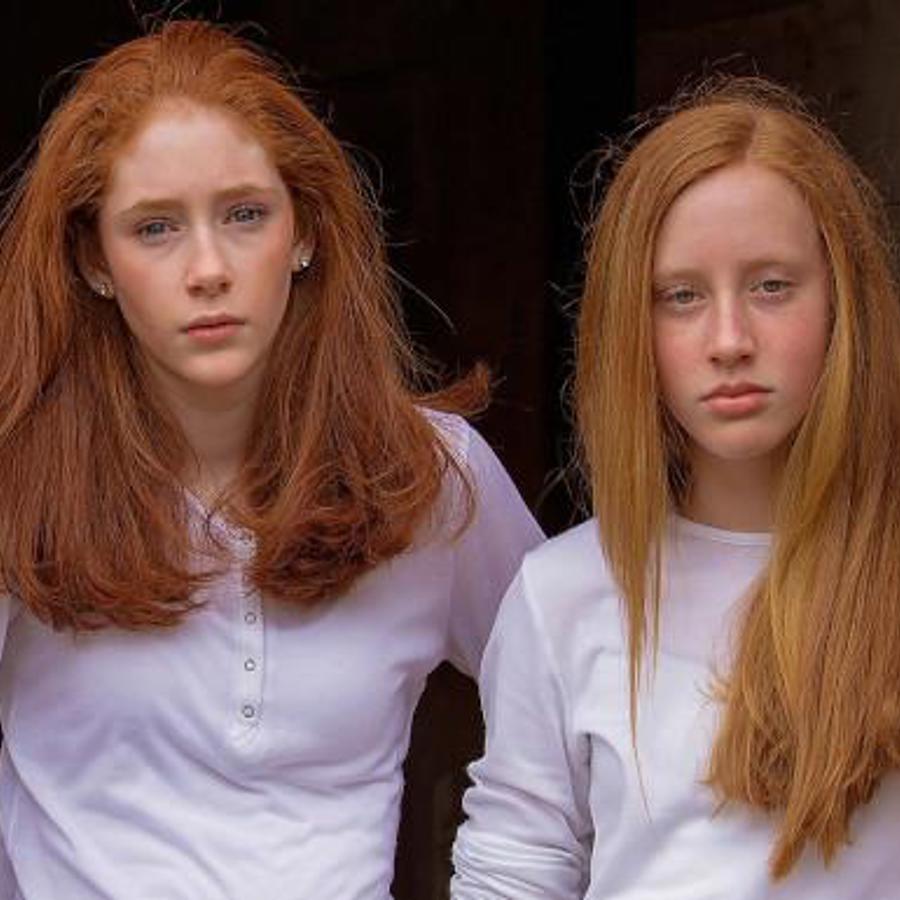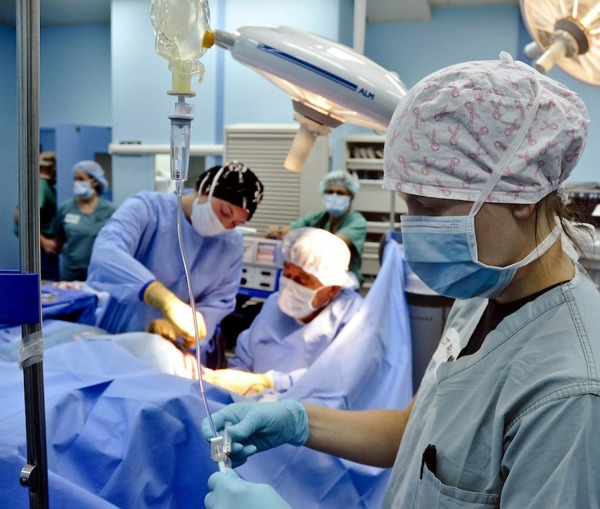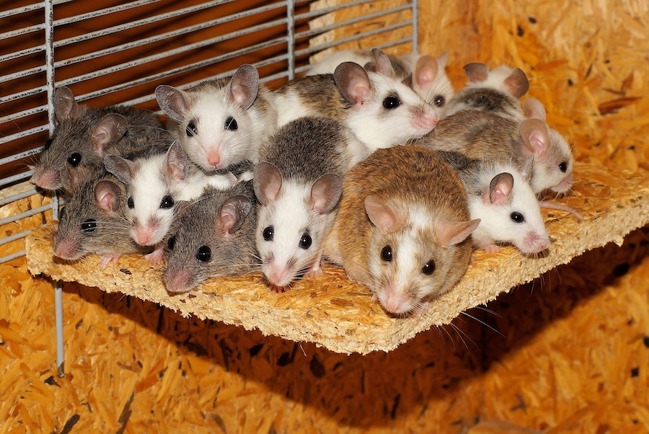
Why do people with red hair need more anesthetic?
June 17, 2014

- Related Topics:
- Red hair,
- Hair color,
- Medical genetics,
- Genetic myths,
- Pleiotropy
A high school student from Michigan asks:
"I have red hair and when got my wisdom teeth removed, my father told me that they had to use more than the regular amount of anesthetics usually needed. At first, I thought nothing of it. Then, when I later started a research paper on red hair, I found out that people with red hair generally need around 20% more anesthetics than people with other hair colors. Why is that? Is it because my MC1R gene is mutated, or is it something else completely."
The jury is still out about whether or not redheads really do need more anesthetics than people with other hair colors. Some studies say they do and some say they don’t.
You found studies (probably the ones here and here) that said they need more anesthesia. But a bigger study here claimed they need the same amount of drugs as people with other hair colors.
If redheads really do need more anesthesia, it is probably because they have a mutation in their MC1R gene. Unfortunately we don’t understand how a mutated MC1R could change the amount of anesthetics needed.
We do know that the MC1R gene has the instructions to make a receptor that binds to hormones that affect hair and skin color. But the receptor can also bind to other molecules. Maybe one of these influences how much anesthesia a redhead needs.
The bottom line is that we don’t know for sure if redheads need extra anesthesia. More studies need to be done to find out. And as you’ll see, these won’t be as easy as you think!

Human studies: Not enough participants or incomplete information
Human studies can be very tricky to interpret. It is true that many redheads have a mutated version of the MC1R gene that causes them to have red hair. But this is not the only way to get red hair. Some redheads have the same version of MC1R as people with other hair colors. And conversely, some people without red hair have the mutated MC1R gene.
Even if redheads have the mutated MC1R, that isn’t their only difference from people with other hair colors. On average, any two people have around 6 million differences in their DNA.
This means that someone with red hair will have millions of differences from someone that doesn’t have red hair. Only one or two of these differences cause red hair! One of the millions of other differences could be responsible for something like response to anesthesia.
This makes it hard to connect something seen in a group of people (like needing more anesthesia) to a specific gene. One way to get around this is to use lots of people in a study. The more people you use, the less likely it is that every redhead in the study will share a difference that is not related to red hair.
The studies looking at the effect of red hair on the amount of anesthesia needed either didn’t look at the redheads’ MC1R gene or didn’t have many participants. Either problem makes results hard to interpret.
The studies showing that people with mutant MC1R need more anesthetics did not have very many participants. One study compared only 10 people with mutant MC1R to 10 people with the normal version of the gene! With so few participants, it is difficult to conclude that the mutation in MC1R causes redheads to need more anesthetics. Some other difference in their DNA could be responsible.
The human studies done to date have given conflicting answers about redheads and anesthetic because of either too few participants or incomplete genetic testing.
The larger study looked at 486 people and found that redheads do not need more drugs than people with other hair colors. However, they did not sequence the DNA to see who had the mutant version of MC1R. Their study probably included a number of redheads with the normal version of MC1R and possibly some people without red hair that had the mutated gene.
If they only kept redheads with a mutant MC1R gene, then they might have come to a different conclusion. So, it remains unclear if the version of MC1R affects how much anesthetics someone needs.
Mouse studies: Better but still inconclusive
As you can see, it is difficult to interpret the results of studies on humans. It is much easier to learn about how genes work using mice. You can use lots of mice that are nearly identical genetically and be much more confident of your results.
Researchers have inbred mice so that they are pretty much the same genetically. While breeding these mice, some ended up with natural mutations that turned their coats from brown to yellow. It turns out that the yellow mice had a mutation in the mouse version of MC1R!
The yellow mice are perfect test subjects. They are identical to brown mice except for their MC1R gene. Researchers can be more confident that differences they see are due to MC1R and not other genes.
Unfortunately even these “perfect” test subjects gave inconclusive results. In one study, yellow mice required more anesthetic to eliminate pain while in other studies (1, 2), yellow mice required less.
It is hard to know what is going on here, but it is safe to say that the experiments were not identical. For example, the researchers tested different anesthetics. Maybe mice with mutations in MC1R are more sensitive to some anesthetics and less sensitive to others.

Or something else could be involved. A new study suggests that mice feel less pain if there is a human male in the room. The differences between the two studies could be something as seemingly trivial as this. Regardless, we cannot be certain how MC1R influences sensitivity to anesthetics.
As you can see, it is still not clear if there is a connection between either redheadedness or MC1R mutations and how much anesthetic you need to deal with the pain. This is most likely because many factors contribute to sensitivity to anesthetics including age, hormones, blood pressure, and other genetic factors.
We still can’t rule out the possibility that MC1R mutations influence sensitivity to anesthetics, but more research needs to be done. This is just one of many examples of how little we understand about what specific genes do and how difficult it can be to figure out.

Author: Catherine Hartzell
When this answer was published in 2014, Catherine was a Ph.D. candidate in the Department of Immunology, studying calcium signaling and T-cell activation in Richard Lewis’s laboratory. Catherine wrote this answer while participating in the Stanford at The Tech program.
 Skip Navigation
Skip Navigation
